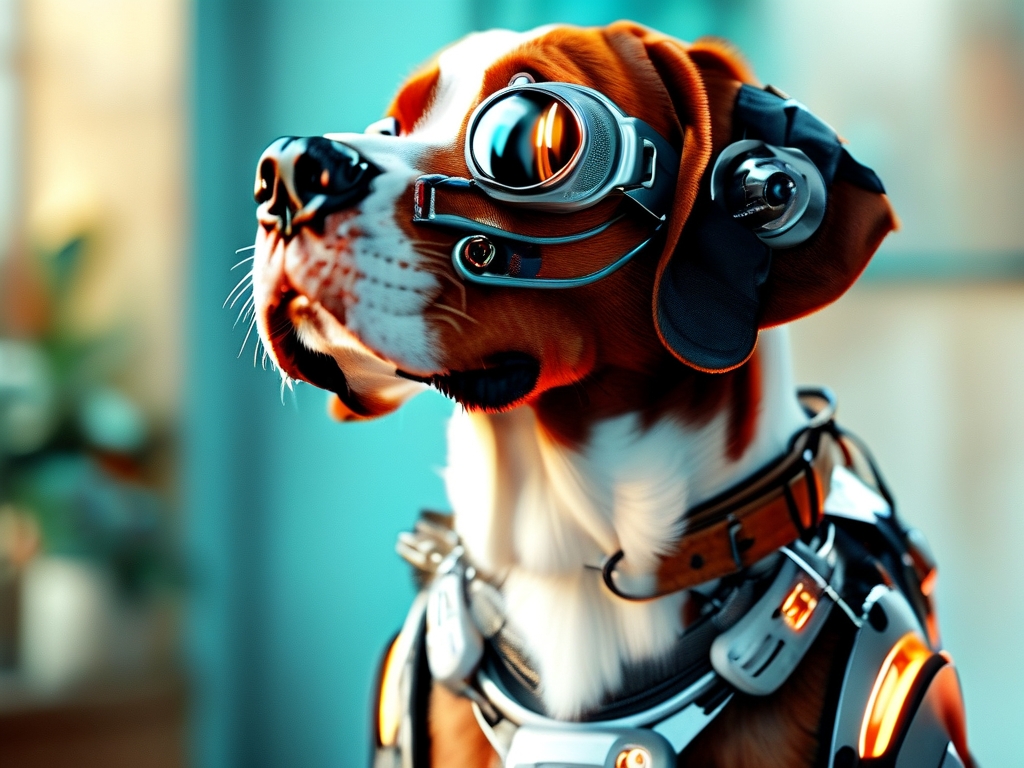In recent years, the intersection of robotics and assistive technology has given rise to groundbreaking innovations, among which guide dog robots stand out as a transformative solution for individuals with visual impairments. These robots combine advanced hardware, artificial intelligence (AI), and human-centered design to replicate—and in some cases surpass—the capabilities of traditional guide dogs. This article delves into the core technical features that define modern guide dog robots, exploring their sensory systems, navigation algorithms, human-robot interaction (HRI) mechanisms, and ethical considerations.

1. Multimodal Sensory Systems
A cornerstone of guide dog robot technology is its ability to perceive and interpret the environment with remarkable precision. Unlike biological guide dogs, which rely on sight, smell, and hearing, robots integrate a suite of sensors:
- LiDAR (Light Detection and Ranging): Creates 3D maps of surroundings by measuring distances with laser pulses, enabling obstacle detection within a radius of up to 30 meters.
- Stereo Cameras: Provide depth perception and object recognition, critical for identifying pedestrians, traffic signals, and uneven terrain.
- Ultrasonic Sensors: Detect nearby obstacles in real time, even in low-light conditions.
- Inertial Measurement Units (IMUs): Track the robot’s acceleration and orientation to ensure stable movement.
These sensors work in tandem to generate a comprehensive environmental model, allowing the robot to navigate dynamic urban landscapes safely.
2. AI-Driven Navigation and Decision-Making
Guide dog robots leverage machine learning algorithms to process sensory data and make split-second decisions. Key technologies include:
- Simultaneous Localization and Mapping (SLAM): Enables the robot to build and update maps of unknown environments while tracking its location—a feature essential for indoor navigation.
- Reinforcement Learning: Trains robots to optimize routes by simulating thousands of scenarios, such as avoiding sudden obstacles or selecting the safest crossing path.
- Predictive Analytics: Anticipates pedestrian movements and vehicle trajectories using historical data patterns, reducing collision risks.
For example, a robot might analyze traffic flow at an intersection, calculate the optimal crossing time, and communicate this decision to the user through haptic feedback.
3. Human-Robot Interaction (HRI) Design
Effective communication between the robot and its user is paramount. Modern systems incorporate:
- Natural Language Processing (NLP): Allows users to issue voice commands (e.g., “Find the nearest café”) and receive verbal updates.
- Haptic Feedback Interfaces: Tactile cues, such as vibrations in the handle or harness, signal turns, stops, or hazards.
- Customizable Behavior Profiles: Users can adjust settings like walking speed or obstacle avoidance sensitivity via smartphone apps.
These features ensure that the robot adapts to individual preferences, fostering trust and independence.
4. Mechanical Design and Mobility
Mimicking the agility of biological guide dogs requires sophisticated engineering:
- Quadrupedal or Wheeled Platforms: While quadrupedal robots (e.g., Boston Dynamics’ Spot) excel in climbing stairs, wheeled designs prioritize energy efficiency on flat surfaces.
- Adaptive Gait Control: Algorithms adjust leg or wheel movements to traverse slopes, gravel, or icy pavements.
- Compact Form Factor: Weighing under 25 kg, most models are designed for portability and ease of use in crowded spaces.
5. Energy Efficiency and Autonomy
To operate for extended periods, guide dog robots employ:
- Low-Power Sensors: LiDAR modules with reduced energy consumption without compromising accuracy.
- Swappable Batteries: Enable quick replacements, providing 8–12 hours of continuous use.
- Solar Charging Options: Experimental models integrate photovoltaic panels for sustainable operation.
6. Ethical and Safety Considerations
As with any AI-driven technology, guide dog robots raise important questions:
- Data Privacy: Ensuring that camera and GPS data remain secure from unauthorized access.
- Fail-Safe Mechanisms: Redundant systems to take over if primary sensors malfunction.
- Legal Frameworks: Addressing liability in accidents and establishing certification standards.
Guide dog robots represent a convergence of robotics, AI, and empathetic design. While they cannot fully replicate the emotional bond of a living guide dog, their technical prowess—unmatched environmental awareness, adaptive learning, and intuitive interaction—positions them as a vital tool for enhancing mobility and autonomy for the visually impaired. As research progresses, advancements in edge computing and biomimetic design promise to make these robots even more accessible and reliable, heralding a new era in assistive technology.


